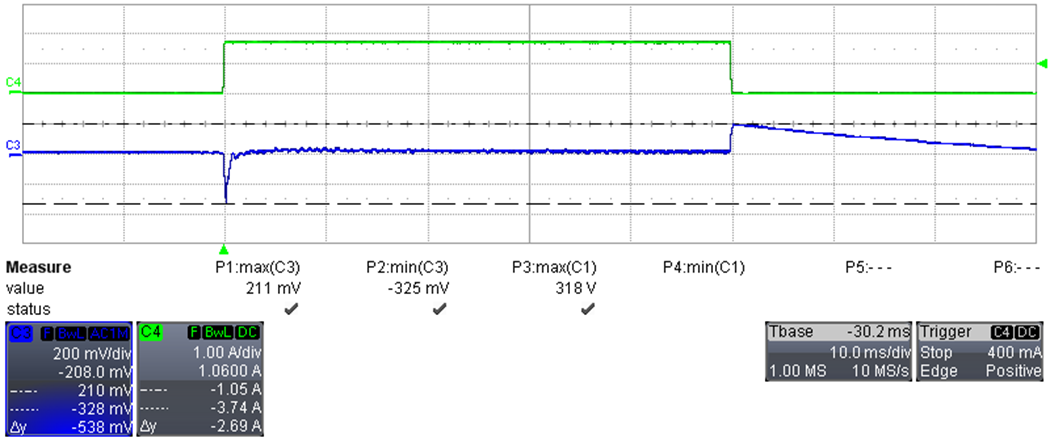TIDT339 june 2023
3.3 Load Transients
The output voltage variation, during load transients, was measured by supplying the converter at 230 VAC. The load was switched between 0 A and 1.7 A. For voltage and current measurement, the bandwidth limit of oscilloscope was set to 20 MHz.
- C3: Output voltage (200 mV/div, 10 ms/div, AC coupling)
- C4: Output current (1 A/div, DC coupling)
 Figure 3-5 Load Transient
Figure 3-5 Load Transient